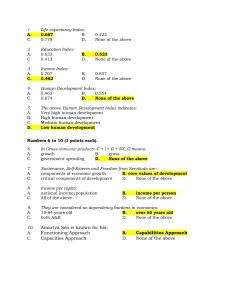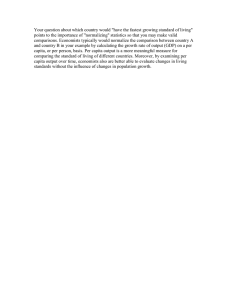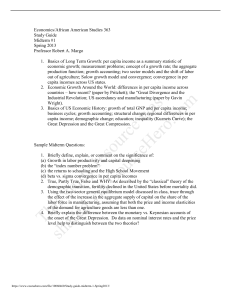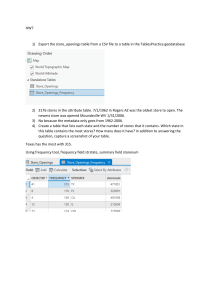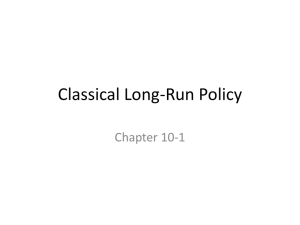Practice Problems
advertisement
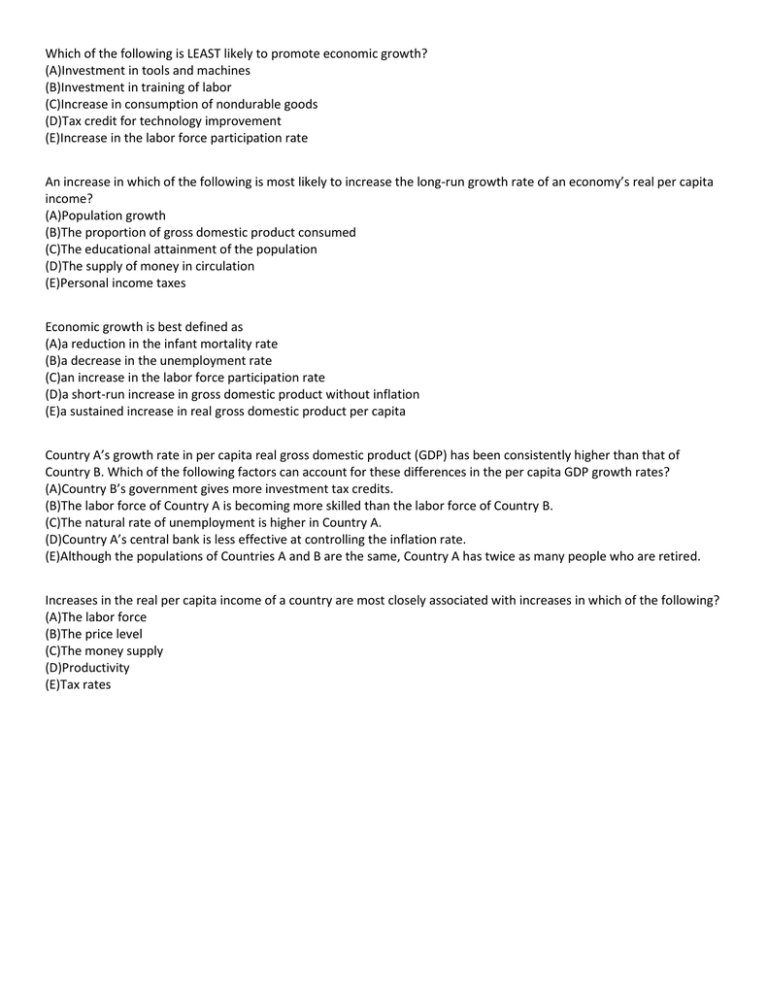
Which of the following is LEAST likely to promote economic growth? (A)Investment in tools and machines (B)Investment in training of labor (C)Increase in consumption of nondurable goods (D)Tax credit for technology improvement (E)Increase in the labor force participation rate An increase in which of the following is most likely to increase the long-run growth rate of an economy’s real per capita income? (A)Population growth (B)The proportion of gross domestic product consumed (C)The educational attainment of the population (D)The supply of money in circulation (E)Personal income taxes Economic growth is best defined as (A)a reduction in the infant mortality rate (B)a decrease in the unemployment rate (C)an increase in the labor force participation rate (D)a short-run increase in gross domestic product without inflation (E)a sustained increase in real gross domestic product per capita Country A’s growth rate in per capita real gross domestic product (GDP) has been consistently higher than that of Country B. Which of the following factors can account for these differences in the per capita GDP growth rates? (A)Country B’s government gives more investment tax credits. (B)The labor force of Country A is becoming more skilled than the labor force of Country B. (C)The natural rate of unemployment is higher in Country A. (D)Country A’s central bank is less effective at controlling the inflation rate. (E)Although the populations of Countries A and B are the same, Country A has twice as many people who are retired. Increases in the real per capita income of a country are most closely associated with increases in which of the following? (A)The labor force (B)The price level (C)The money supply (D)Productivity (E)Tax rates
